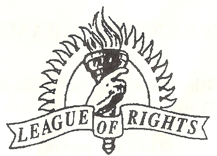The Eternal Dance of Ice and Fire: Earth's Climate Swings Over Millions of Years, By Chris Knight (Florida)
President Trump's UN zinger, "This 'climate change,' it's the greatest con job ever perpetrated on the world," struck a chord with John Leake, the erstwhile Greenpeace foot soldier turned sceptic. Leake, in his September 26 Substack dispatch, nods vigorously, channelling his inner environmentalist gone rogue to spotlight Texas scorcher records from the Dust Bowl era and Jurassic hothouses where CO2 partied at four times today's levels. But the real kicker? A 1992 USGS report on the Arctic Ocean Borderland's wild ride over the last 3 million years: Glaciers bulldozing to Iowa, then polar forests at 79°N, followed by another deep freeze birthing the classic Ice Ages. Leake's litany raises daggers at the "human-induced" narrative: If Earth has yo-yoed without SUVs, what's the fuss? In this essay, we'll time-travel together through the planet's thermal tango, from Jurassic jungles to Pleistocene pulses, unpacking the natural engines of these swings. Spoiler: Milankovitch wobbles and CO2 capers have headlined for eons; today's act is just the latest encore.
Leake's Lone Star lens cuts sharp: Texas sizzled to 120°F in Seymour (1936) and Monahans (1994), with 1980's hellish summer logging 69 triple-digit days in Dallas-Fort Worth, including a 42-day streak. NOAA's thermometer tally starts reliably in 1880, mere 145 years of data, making "records" a snapshot, not scripture. Pre-17th-century? Proxy proxies like tree rings whisper of hotter medieval maxima and frosty Little Ice Ages, without industrial belch. Leake's point lands: Texas heat is not novel; it's cyclical, a regional riff on global gyrations. As 2023 edged 2011 for hottest statewide average (85.3°F), the trend ticks up, but against 3 million years of drama? A blip.
Rewind 201-145 million years: The Jurassic, dinosaur domain, baked at 5-10°C warmer than now, CO2 clocking 1,000-2,000 ppm (4-8x pre-industrial). Volcanic belches from subduction zones supercharged the greenhouse, birthing humid havens where conifers towered and sauropods slurped. Prudhoe Bay's oil? Jurassic algae blooms, photosynthesising that CO2 bounty into biomass bonanza. No ice caps, sea levels lapping continents, Earth thrived, teeming with life. Leake's hook: If dinosaurs danced under such duress, why panic at 420 ppm?
The USGS's 1992 gem, echoed in modern paleoceanography, unspools the Arctic's recent rollercoaster. From 3-0.85 Ma (Pliocene-Pleistocene): Two mega-cooling cycles, each climaxing in Northern Hemisphere ice sheets. First: Ends 2.1 Ma, glaciers grinding to Iowa via the Mississippi. Then — bam — collapse unleashes "extremely warm" climes, forests hugging the North Pole at 79°39'N (northern Greenland). Second cycle: Warmer encore, then 1.7 Ma chill birthing the "classic Ice Ages" from 850 ka.
Proxies paint it vivid: Tree-line proxies show sub-frigid seas fringed by conifer-deciduous groves, yielding to tundra and permafrost by 2.4 Ma. Cores from Lomonosov Ridge log MIS 11's (424-374 ka) hyperwarmth: 8-10°C SSTs, ice-free summers. Eocene echoes (56-34 Ma): PETM's 6°C spike, CO2-fueled, without humans. Today's Arctic? Colder rebound from that 2.4 Ma thaw, with sea ice perennial since ~47 Ma.
These swings? All choreographed by orbital Milankovitch cycles: Earth's orbital eccentricity (100 ka cycle), axial tilt (41 ka), precession (23 ka). Pre-MPT (3-1 Ma): 41 ka pulses; post-1 Ma: Amped 100 ka behemoths. Feedbacks amplify: Ice-albedo, CO2 drawdown in glacials (dustier, drier), ocean circulation flips. Five major ice ages punctuate 2.4 billion years; Quaternary's (2.58 Ma-now) the latest, Holocene our interlude since 11.7 ka. We're "overdue" for chill, per some, Milankovitch minima loom ~50 ka out.
So, in short, just forget about global warming in our times; rather expect a turn to the cold, if not an ice age.
https://www.thefocalpoints.com/p/wide-swings-of-warming-and-cooling-c56


Comments